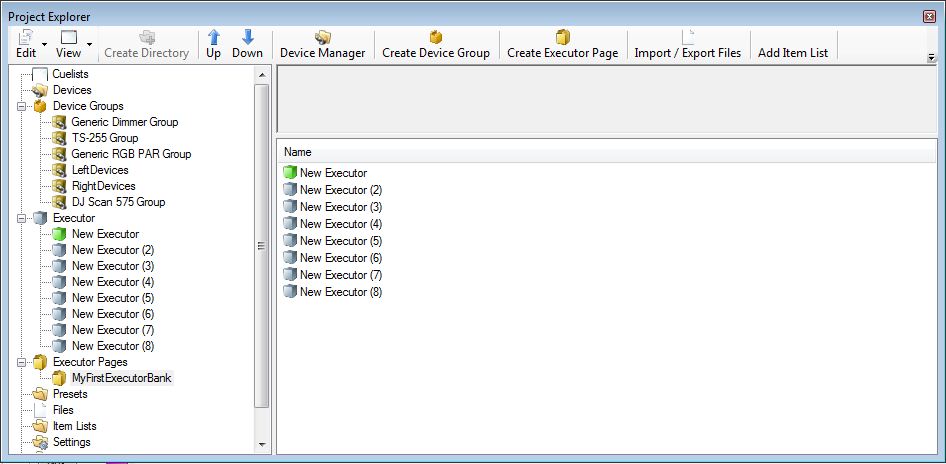No edit summary |
(Cue list Cue eingefügt) |
||
| Line 80: | Line 80: | ||
{{Bild_mit_Unterschrift |DMXC3L12 SL modemenue.jpg|3|Modes|center}} | {{Bild_mit_Unterschrift |DMXC3L12 SL modemenue.jpg|3|Modes|center}} | ||
==Work with multiple Cue lists== | |||
There are different strategies for the design and splitting of the show in cue lists. You can create cue lists for the parts of the show (verse, chorus, Act) or you can divide groups of devices in cue lists (background LEDs, moving lights, etc.) or make a combination of both. It depends on personal taste and the size of the show. | |||
You can insert a special "Cue list Cue" within a Cue list (Add --> Special --> Cue list). This lets you easily control another cue list. Thus, you could apply it for example for a recurring refrain. | |||
Revision as of 08:46, 19 January 2013
Overview
In this lesson, you learn how to perform cue lists by executors.
Lecture 15: Executors and execution of show
In Lesson 8 and 12 it was explained how to create scenes and scenelists. Now we want to execute our scene lists.
This works like in DMXControl 2, by opening the cuelist and using the Go and STOP buttons.
To run cues and cue lists you can also use executors. These correspond roughly to the submasters from DMXControl 2.
Again you can create various "banks" - in DMXControl 3 Pages' called - in order to increase the number of executors in groups of 8. So, we create first in the Project Explorer a new executor page:

By default we have 8 executors in one page (the number may be adjusted in Application Settings).
The assignment to the executors happens as follows:
Assignment of cues
When creating the cue ("Add cue" button) you have a small selection button next to the triangle. There you can assign the new cue to an executor directly. After selection, then please 'add cue' button again.
Assignment of cuelists
In Project Explorer you can assign the cue list using "drag and drop" to the executors. Template:Bild mit Unterschrift
That an item has been assigned to an executor, is evident from the small green LED in select field. Try out what happens if you click on the "Select field".
There are other ways that you can affect the playback of a scene list:
| Functionality | Description |
|---|---|
| Intensity | |
| Scene list Speed | The speed with which the scene list is traversed is affected. The speed of the effects will be unaffected. |
| Effect Speed | The speed of the used in the scene list is influenced effects. The speed of the scene list is not changed. |
You can select between different execution modes as you know it from the playlist mode of your favorite audio player:
| Functionality | Description |
|---|---|
| Single | Die cue list is executed once |
| Repeat | Die cue list is repeated |
| Bounce | If the scene list arrived at the end it is repeated in the reverse order |
Work with multiple Cue lists
There are different strategies for the design and splitting of the show in cue lists. You can create cue lists for the parts of the show (verse, chorus, Act) or you can divide groups of devices in cue lists (background LEDs, moving lights, etc.) or make a combination of both. It depends on personal taste and the size of the show.
You can insert a special "Cue list Cue" within a Cue list (Add --> Special --> Cue list). This lets you easily control another cue list. Thus, you could apply it for example for a recurring refrain.
Excercise
- Assign a new cue to to an executor directly
- Assign a cue list to an executor
Certificate
I have understood the topics of this lecture and want to continue with next course: Lesson 16
